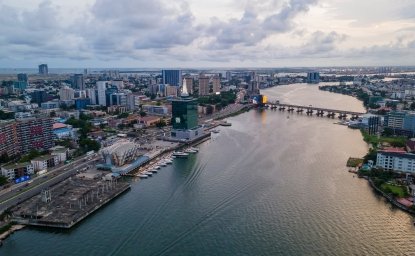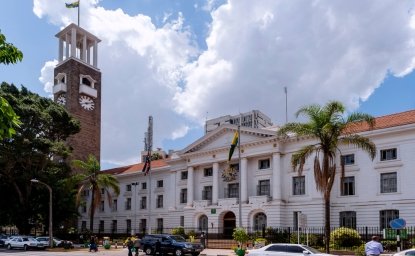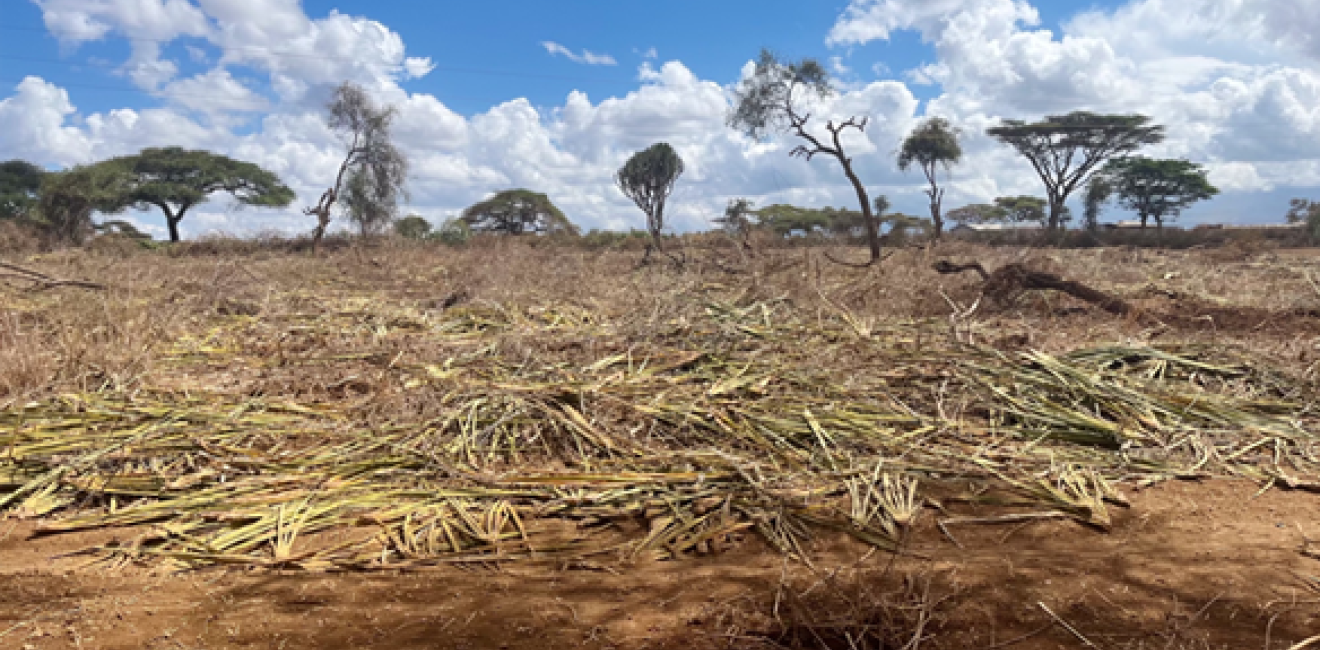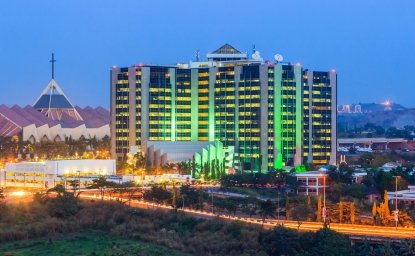
A blog of the Africa Program
According to the World Health Organization (WHO), 70 to 80% of people in Sub-Saharan Africa rely on herbal medicine as their primary form of health care. In some countries, the rates are even higher — in Ethiopia and Burundi, 90% of the population uses traditional medicine to meet their healthcare needs. Other communities use traditional medicine as a supplement to modern (or Western) medical practices–one study shows that 76% of members of Kenya's Kuku Ranch use both herbal and modern medicine in tandem.¹ Most forms of traditional medicine are herbal or plant-based and thus rely on the accessibility of plant resources.
Risks Posed by Deforestation
While global deforestation rates have decreased, thus reducing the risk to medicinal plants in some regions, deforestation is on the rise in Africa. The continent experienced a net annual forest loss of 3.94 million hectares (ha) from 2010–2020, making Africa's deforestation rates the highest of any global region. This directly affects plant biodiversity — 33% of Africa's tropical vegetation is potentially threatened by extinction, while another third is considered rare.
Deforestation simultaneously presents two dangers to medicinal plants:
1) they are cut down in the process of clearing vegetation, and 2) the habitats they grow in are fragmented, affecting plants' dispersal, species interactions, and resource availability.
High deforestation rates on the African continent made it increasingly difficult for traditional medical practitioners to find medicinal plants. It can take hours for practitioners to find the plant that they need — if they find it at all.
The increasing scarcity of medicinal plants has hiked up the cost of herbal medical care. Practitioners report that in some regions of Nigeria, prices for traditional medical care increased by 50-100% from 2018-2022. Other herbal medical practitioners have turned to more available but less effective plants for treating diseases, thus reducing the efficacy of treatment.
In communities whose medical care solely relies on traditional medicine due to the high cost or inaccessibility of modern medical practices, deforestation's impacts on medicinal plants make treating diseases–from malaria to STDs–increasingly difficult.
Global Impacts
African communities are just some that are missing the health benefits of plants due to deforestation. According to the U.S. Department of Agriculture, "40% of the drugs behind the pharmacist's counter in the Western world are derived from plants that people have used for centuries, including the top 20 best-selling prescription drugs in the United States today." Some forms of chemotherapy, called plant alkaloids, come directly from plants. Other drugs, like aspirin, include synthetic ingredients that the medicinal properties of plants have inspired.
Research on medicinal plants in Africa and their benefits to both modern and traditional medical practices is still ongoing. Artemisia afra, or African Wormwood, was studied due to its potential to fight against diseases and disorders from COVID-19 to depression. An extract called Trimesemine™, derived from the Sceletium tortuosum, or Kanna, could be used to treat Alzheimer's disease. While current research shows the many benefits of these plants, more clinical research is required to understand how they can be applied in modern medical practices.
According to WHO, significant medical and pharmacological discoveries are continuously made through a greater understanding of the Earth's biodiversity. A loss in biodiversity, such as that caused by deforestation, may thus limit the future discovery of potential treatments for diseases and health problems experienced by individuals worldwide.

Moving Forward: Recommendations and Options
Preventing Deforestation
Deforestation in Africa is primarily driven by agricultural expansion, mineral extraction, infrastructure development, commercial logging, and charcoal and biofuel production. Numerous actions can be taken across local, federal, and international levels to reduce the drivers and the resulting high rates of deforestation.
For example, increasing agricultural yields may decrease the need for agricultural expansion, resulting in slower deforestation rates. In 2022, the average crop yield across the continent was just 4.0 tons of crops per hectare, compared to a global average minus Africa of 7.6 tons of crops per hectare. Crop yields can be increased through inputs such as improved irrigation systems, soil erosion protection methods, fertilizers, and drought-resistant high-yield seeds, among others. Programs that educate or partner with farmers to provide resources may help decrease deforestation in the long term.
Protecting Plant Resources
Deforestation is, to some extent, inevitable. Africa's rising population, ongoing advances in development, and need for food security will require land to be cleared for settlement, infrastructure, and agriculture. While it is essential to minimalize deforestation as much as possible, it is also important to protect plant biodiversity from inevitable deforestation by creating protected areas and medicinal plant gardens.
Nigeria, for example, currently has 34 botanical gardens in which plant biodiversity is preserved. These gardens, however, have insufficient resources for extractive use and thus limit or prevent traditional medicine practitioners from harvesting the plants they need. Many protected areas, such as national parks, similarly stop local communities from harvesting plants on protected land. In South Africa, for example, communities have the legal right to access parks only as non-extractive paying visitors.
Ensuring Adequate Access
The limited accessibility of existing botanical gardens and protected areas to local communities presents a need for new modes of biodiversity protection. One such system can be seen in Kenya's community conservancies. To form a community conservancy, landowners pool their plots of land together and create a lease agreement that preserves the land for wildlife protection and sustainable land use practices–such as grazing, tourism, and medicinal plant harvesting. Another potential method of preserving plants for medicinal use is the creation of community-owned extractive gardens.
Compensating Traditional Knowledge
These methods of biodiversity conservation require everything from legal expertise to land ownership and thus demand community access to financial resources. While there are many potential modes of securing such resources, including NGO support or government policies, it is worth looking into legal mechanisms through which Indigenous communities can reap the benefits of their knowledge's use in modern medical practices.
The Nagoya Protocol on Access to Genetic Resources and the Fair and Equitable Sharing of Benefits Arising from their Utilization, signed and ratified by 138 countries worldwide, outlines the measures countries can take to regulate access to biological resources for innovation purposes.
Most African governments signed and ratified the treaty and therefore have the legal right to ensure international pharmaceutical organizations follow benefit-sharing guidelines. While some countries, like the United States, never signed or ratified the Nagoya Protocol, companies based in non-signatory countries must comply with the Access and Benefits Sharing (ABS) laws of provider countries. Though the Nagoya Protocol allows communities to reap the benefits of their traditional knowledge, studies show that around the world, and especially in Africa, ABS principles are only weakly implemented.
While critics of the Nagoya Protocol claim that it may slow the process of medical research due to the necessity of receiving prior and informed consent from local communities, ABS laws can provide legal certainty to communities who share their knowledge and resources, thus incentivizing communities to engage with researchers. Therefore, implementing the Nagoya Protocol's principles can significantly benefit African and global communities. In many countries throughout the African continent, there are few or no legislative, administrative, or policy measures implementing the Nagoya Protocol. Kenya is one exception, with nine policy tools for implementing Nagoya Protocol principles. One policy of note is the Protection of Traditional Knowledge and Cultural Expressions Act of 2016, which allows communities to hold a new form of intellectual property right (IPR) so they may receive royalties from companies' use of their cultural heritage.
There is a need for African governments to strengthen regulations and ensure that communities are receiving an equitable share of the benefits of their knowledge. The money communities receive from benefit sharing can support local conservation practices, thus protecting and ensuring community access to medicinal plants. African countries with few or no legislative tools can adopt policies similar to Kenya's Traditional Knowledge and Cultural Expressions Act. These governments can consider compiling policy advancements with adequate enforcement of ABS laws, public education efforts, and high levels of engagement with local communities, thereby ensuring that communities know and have access to their rights.
Conclusion
Taking action to prevent deforestation, protect plant resources, ensure adequate community access, and compensate for traditional knowledge used to create commercial drugs could guarantee that African medicinal plants can be used for both traditional medicine and global pharmaceutical research. In a world in which both disease and science are constantly evolving, it is necessary to ensure that the resources of the present remain accessible for future use and research.
Amanda Clark is the Staff Intern at the Wilson Center Africa Program for the Spring 2023 term (January-April). She is a recent graduate of Muhlenberg College, where she received a BA in Sustainability Studies with a focus on international sustainable development.
¹Kiringe, J. W. (2005). Ecological and anthropological threats to ethno-medicinal plant resources and their utilization in Maasai communal ranches in the Amboseli region of Kenya. Ethnobotany Research and Applications, 3, 231–242. https://doi.org/10.17348/era.3.0.231-242
The opinions expressed on this blog are solely those of the authors. They do not reflect the views of the Wilson Center or those of Carnegie Corporation of New York. The Wilson Center's Africa Program provides a safe space for various perspectives to be shared and discussed on critical issues of importance to both Africa and the United States.
Author


Africa Program
The Africa Program works to address the most critical issues facing Africa and US-Africa relations, build mutually beneficial US-Africa relations, and enhance knowledge and understanding about Africa in the United States. The Program achieves its mission through in-depth research and analyses, public discussion, working groups, and briefings that bring together policymakers, practitioners, and subject matter experts to analyze and offer practical options for tackling key challenges in Africa and in US-Africa relations. Read more

Explore More in Africa Up Close
Browse Africa Up Close
The Innovative Landscape of African Sovereign Wealth Funds



